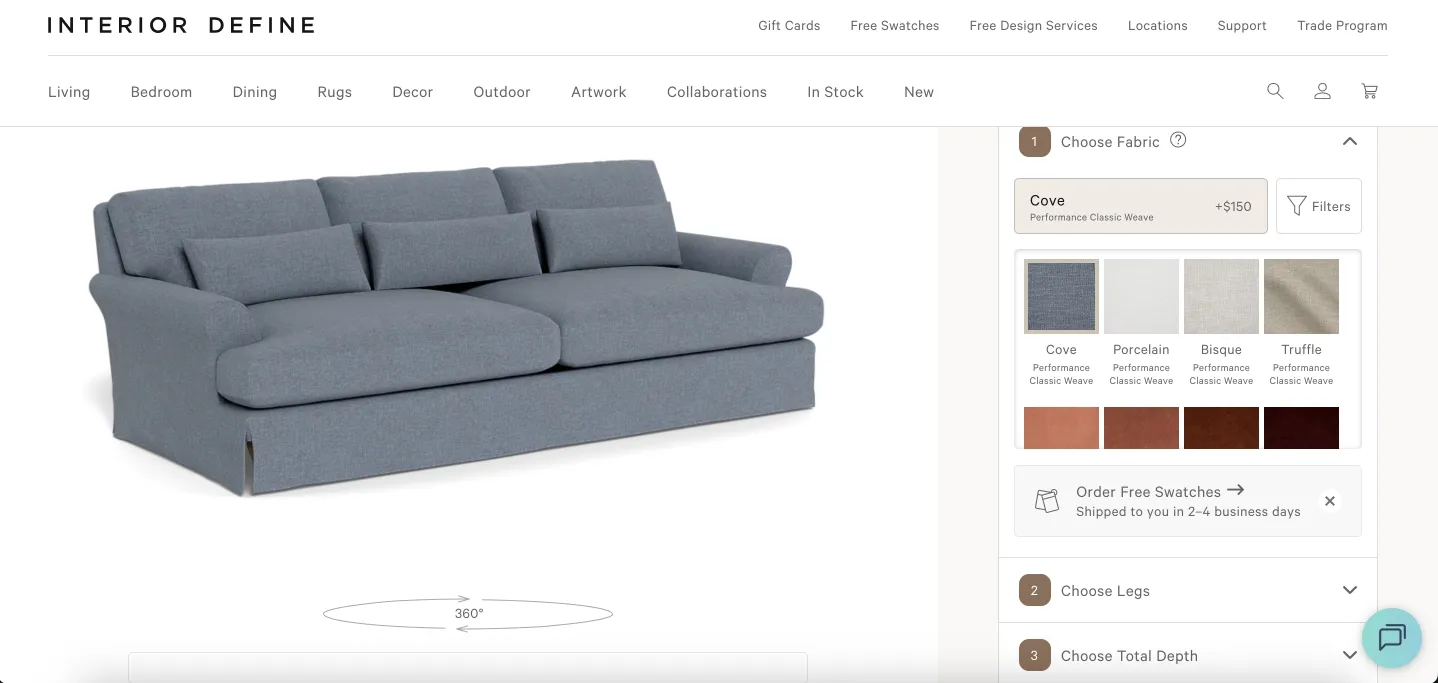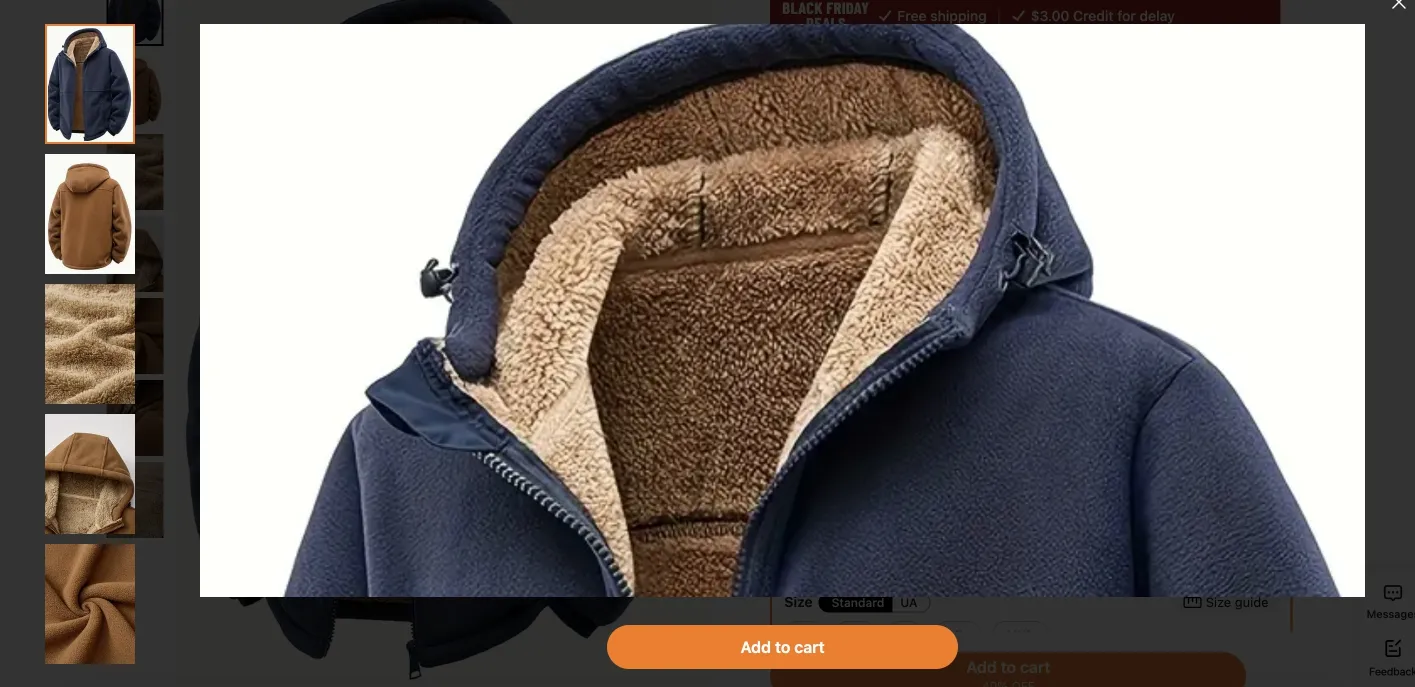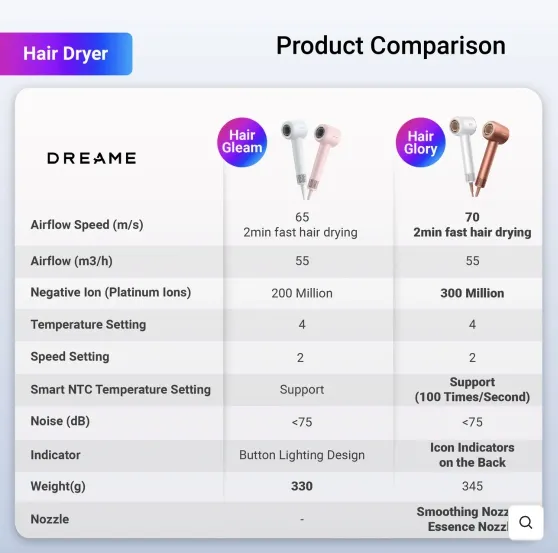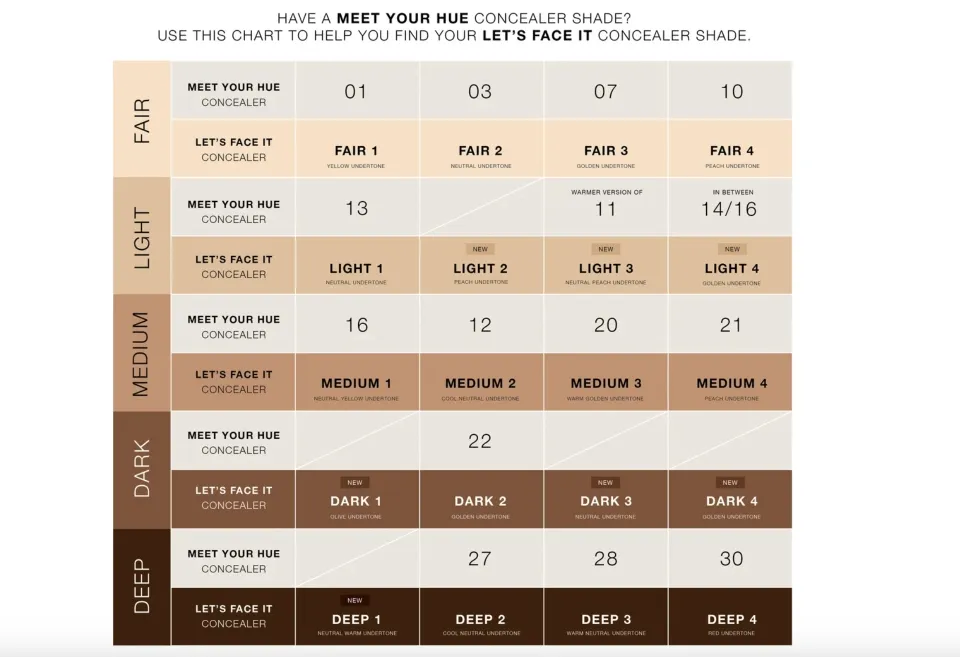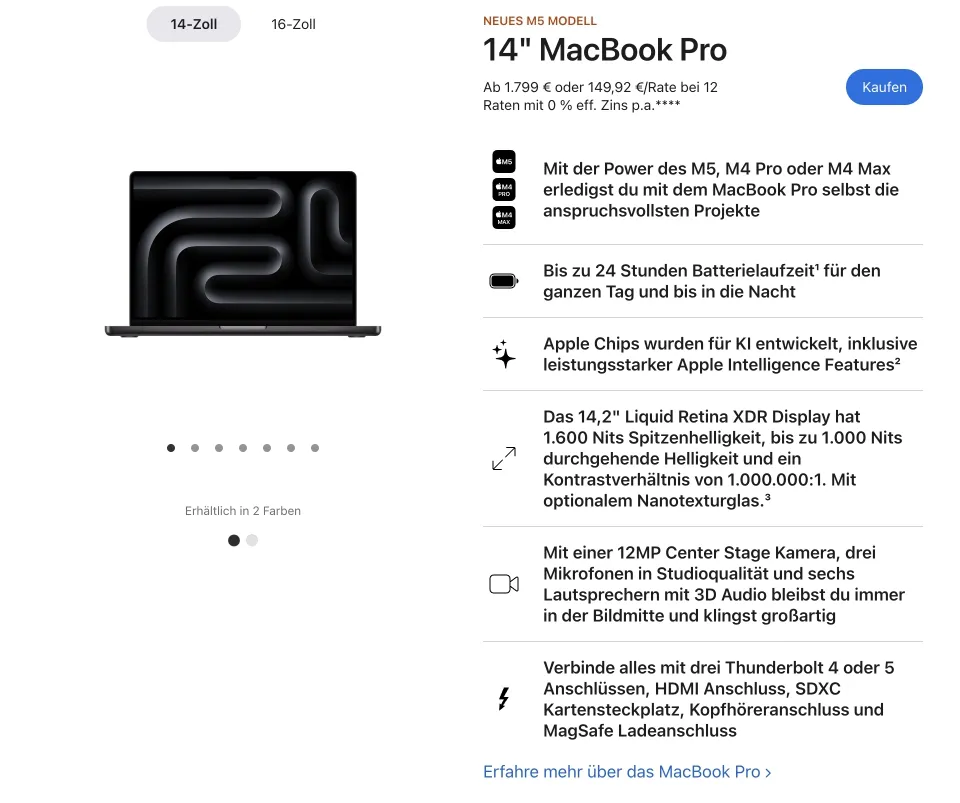In this article, you’ll learn:
Nearly 70% of online shoppers abandon their carts — and not always because of price. Often, it's uncertainty: Will this actually work for me? Rich content answers that question before they even have to ask.
From interactive product videos and 360-degree spins to AR visualization and customer photo galleries, rich product content encompasses any media that goes beyond basic text and static images. The impact is measurable: brands that implement rich content report increased conversions, reduced returns, and significantly higher customer satisfaction.
Beyond basic product photos: rich content meaning
Rich product content provides detailed information that helps shoppers evaluate products beyond basic images and descriptions. Standard product pages typically include essential elements: a few images, pricing, specifications, and a brief description.
Rich ecommerce content expands on this foundation with additional materials such as demonstration videos, 360-degree product views, augmented reality visualization tools, user-generated photos, instructional guides, size calculation tools, and product comparison charts.
This content addresses specific customer concerns during the purchase decision: product functionality, dimensional compatibility, real-world appearance, and usage instructions.
It's the extra layer of information and interaction that answers the questions bouncing around in a shopper's head: How does this work? Will it fit? What does it look like in real life? How do I use it?
4 ways rich product content drives revenue and reduces costs
Higher conversion rates: Product pages with videos convert 80-85% better than those without. Interactive 360-degree views boost conversions by up to 30%.
Fewer returns: Detailed size guides reduce apparel returns by 30-60%. When size guides help customers understand exact product dimensions and fit, they make more confident purchase decisions and are far more likely to keep their orders.
Increased order value: Product videos and comparison tools can increase average order value up to 50%.
Better SEO results: Video content increases your chances of appearing on Google's first page.
11 rich e-commerce content types that answer customer questions
Product videos
Show your product in action. A 45-second video beats three paragraphs of explanation.
Works for: Electronics, appliances, tools—anything that's easier to show than describe.
360-degree spins
Let people rotate the product as if they were holding it. Shoppers want to see the back, the bottom, all the angles they'd check in a store.
Works for: Shoes, bags, furniture, electronics, watches—anything with design details that matter.
High-resolution zoom
Let them get close enough to see fabric weave, stitching, and finish quality. People zoom in when they're checking if something's worth the price.
Works for: Luxury items, jewelry, leather goods, anything where craftsmanship justifies the cost.
Lifestyle photos
Show your product in the real world—furniture in actual rooms, clothes on different body types, gear being used outside. Helps people picture it in their lives.
Works for: Fashion, home decor, furniture, outdoor gear—anything where context matters.
Size guides that help
Give people a tool that says "based on your measurements, get the medium" instead of making them guess from a generic chart. Fit anxiety is why people return clothes.
Works for: Clothing, shoes, furniture (will it fit through my door?).
AR visualization
Let them point their phone at their living room and see if the couch fits. It takes the guesswork out of "will this work in my space?"
Works for: Furniture, big home decor, paint colors—also, a makeup try-on if you're in beauty.
Comparison charts
Line up three models side by side so people can see the differences. Beats making them flip between tabs and imagine specs.
Works for: Tech, appliances, subscription plans, any time you've got multiple versions of something.
How-to content
Show them it's not complicated. Assembly instructions, application tutorials, recipe ideas—whatever stops people from thinking "that looks complex."
Works for: Anything you assemble, beauty products with a learning curve, kitchen gadgets, and tech setup.
Detailed specs
Full technical breakdown for people who care about thread pitch, wattage, materials, and certifications. Some buyers need this information.
Works for: Electronics, appliances, industrial products, anything with compatibility requirements.
Q&A sections
Let customers ask questions and get answers from you or other buyers. Half your customers have the same question—answer it once where everyone can see it.
Works for: Complex products, new people don't understand yet, and anything with compatibility issues.
Implementation: 5 steps from audit to optimization
Step 1: Audit
Start with a spreadsheet. List every SKU and what content you currently have—how many photos, any videos, and whether the copy is complete. You'll spot patterns fast: maybe your electronics look good, but furniture is bare-bones.
Pull your customer service reports. What are the top 20 questions people ask before buying? "Does this come with batteries?" "What's the weight limit?" "Will this fit a queen bed?" Those questions are gaps in your content.
Look for patterns in why people return products. If 30% say "size not as expected," you've got a visualization problem. "Color looked different" means your photos are off. Return reasons are a roadmap—they show you exactly where inaccurate or missing content costs you money.
Check what each sales channel allows. Amazon has specific image dimensions. Your own site has bandwidth limits. Social platforms want particular aspect ratios. Write down the technical requirements to avoid creating content that gets rejected.
You'll end up with a complete picture of the content you have now, the questions customers keep asking, why they're returning products, and the specs each channel needs.
Step 2: Prioritize
Score each opportunity with ICE:
- Impact (1-10): Will this move the needle on conversions or returns?
- Confidence (1-10): Are you sure it'll work? If competitors do it successfully or customers literally ask for it, score high.
- Effort (1-10): How hard is this to pull off? Less work = higher score.
Take impact times confidence, divide by effort. That's your priority number.
Go after the wins that don't require heroic effort:
- Electronics → video + comparison chart
- Furniture → 360 spin + assembly video
- Apparel → fit video on different bodies + size tool
- Beauty → how-to tutorial + real customer photos
You'll end up with: A ranked list showing which 10-20 products get rich content first and what type each needs.
Step 3: Produce
For videos:
- Keep it under 60 seconds. Nobody watches longer.
- Hook them in 5 seconds or they're gone.
- Add subtitles—most people watch without sound.
- Shoot horizontally for your site; cut vertically for social.
- Show the product working, not someone talking about it.
For 360 spins:
- 24-36 frames give you smooth rotation without massive files.
- Plain background—white or light gray.
- Light it evenly so colors look right.
- Keep the whole thing under 2MB, or loading kills the experience.
For text blocks:
- Max 3-4 benefits. More overwhelms people.
- Write simply. "Holds 50 lbs" beats "Substantial load capacity."
- Use real numbers. "Charges in 2 hours," not "Fast charging."
- Say what it does for them: "Stay cool during workouts," not "Moisture-wicking technology."
Shoot in batches. Do ten furniture pieces in one session instead of scheduling ten separate shoots.
You'll end up with: Content ready to go live, all sized correctly for where it needs to go.
Step 4: Publish
Set up your PIM system with profiles for each channel. Tell it once what Amazon needs, what your site needs, what social needs. It'll automatically reformat everything instead of you having to do it manually every time.
Build checks that run before anything goes live. Does the image meet the minimum size? Is the file too big? Does the video have metadata? Catch problems before they cause rejections.
Look at how customers will see it. Pull it up on your phone, your laptop, or a tablet. Does everything work? Does it load fast enough? Check each channel separately—what works on your site might break on Amazon.
You'll end up with: Content lives everywhere, formatted right, no rejected uploads.
Step 5: Measure
Pick 20-30 products and add rich content to each. Pick another 20-30 similar products and leave them alone. That's your test.
Run it for at least a month. Week one tells you nothing—you need more time to get statistically significant data.
Watch these numbers:
- Conversion rate of the pages
- How much do people spend per order
- How often do they return products
- How long do they stay on the page
- Track video views or clicks on spins
Break it down by device, traffic source, and new vs returning customers. Those details matter for what you do next.
Report clearly:
| Metric | Control | Rich product content | Lift |
|---|---|---|---|
| CVR | 2.3% | 3.1% | +35% |
| AOV | $67 | $73 | +9% |
| Return Rate | 18% | 13% | -28% |
| Time on Page | 1:22 | 2:47 | +103% |
Iterate based on findings: If videos perform but 360-degree spins don't, double down on video. Let data guide the following production priorities.
Deliverable: Performance report showing business impact, segment insights, and data-driven recommendations for scaling.
Realistic 90-day implementation
First month: Do your audit, set up your channel profiles, score everything with ICE. Then pick 1-2 product categories where the need is obvious and create videos, comparison charts, and FAQ sections. Start tracking what happens.
Second month: Add 360 spins to products where people need to see all angles. Set up proper tests—some products get the new content, similar ones don't. Build automated checks to catch harmful files before they go live. Look at what's working from month one.
Third month: If you're losing money on returns because clothes or your products don't fit, test AR on those products. Take what worked in your pilot and expand it to more categories. Pull together the numbers to show what this delivered.
Three months in, you'll know what works, your team will have a process that doesn't suck, and you can keep scaling without reinventing the wheel every time.
Summary
Rich product content—videos, 360-degree views, AR, interactive guides—solves online shopping's core problem: customers can't physically evaluate products before buying.
It increases conversion and reduces return. For e-commerce businesses, that means significant gains.
Rich content isn't optional—it's the difference between browsers and buyers, between costly returns and profitable operations. The only question is how quickly you can start.
FAQ
Do I need rich content for every product?
Not every product requires rich content. Focus resources on high-value items, products with elevated return rates, and categories where customers typically need additional information before purchasing. Apply a strategic prioritization approach.
Can I use my phone for videos?
Yes, modern smartphones can produce high-quality video content. Essential requirements include stable mounting equipment (such as a tripod), proper lighting, clear audio capture, and precise editing.
How do I handle thousands of SKUs?
Apply the 80/20 principle: approximately 20% of products typically generate 80% of revenue. Begin with this high-performing segment. Premium content treatment is not necessary for every product in your catalog.
What's the minimum viable setup?
A minimum viable rich content setup includes: one product demonstration video (45-60 seconds), 5-7 high-resolution images including lifestyle photography, a comprehensive specifications section, and customer reviews with user-submitted photos.
Eugene Pristupa
A PIM Toriut product manager, Eugene specializes in catalog structure, metadata governance, and feed optimization. His background in sales, logistics, and analytics lets him translate customer workflows into practical product data processes that scale across regions, SKUs, and channels.



